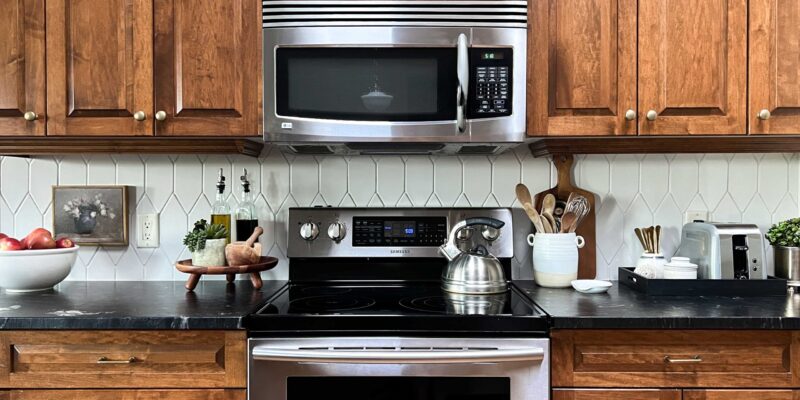Kitchen cabinets are the backbone of any culinary space, providing functional storage and aesthetic appeal. Over time, however, wear and tear can take their toll, leaving cabinets looking dull, dated, or damaged. While a total cabinet replacement may seem daunting and expensive, cabinet refinishing offers a cost-effective and environmentally friendly alternative to breathe new life into your kitchen.
In this detailed article, we explore the process, benefits, considerations, and tips for kitchen cabinet refinishing, empowering homeowners to transform their kitchens with ease and style.
Understanding Cabinet Refinishing
Cabinet refinishing, also known as cabinet re-facing or resurfacing, involves refreshing the exterior appearance of existing cabinets by applying new finishes, paints, or veneers. Unlike cabinet replacement, which requires removing and replacing entire cabinet units, refinishing focuses on updating the cabinet doors, drawer fronts, and visible surfaces while retaining the existing cabinet framework and layout. This approach offers numerous advantages, including cost savings, shorter project timelines, and reduced environmental impact.
The Cabinet Refinishing Process
- Assessment and Preparation: The process begins with an evaluation of the existing cabinets to evaluate their condition, material, and suitability for refinishing. Any repairs, such as filling in cracks, repairing dents, or replacing damaged hardware, are addressed before proceeding.
- Surface Cleaning and Sanding: The cabinet surfaces are thoroughly cleaned to remove dirt, grease, and residues. Next, the surfaces are lightly sanded to create a smooth and uniform texture, promoting adhesion and ensuring optimal finish application.
- Priming: A high-quality primer is applied to the cabinet surfaces to seal the wood, prevent stains from bleeding through, and create a suitable base for the finish coats. Primer selection may vary depending on the cabinet material and the chosen finish.
- Painting or Staining: Once the primer has dried, the cabinets are painting or stained with the desired colour or finish. Painting offers endless colour options, from classic whites to bold hues, while staining enhances the natural beauty of wood grain. Multiple coats may be applied for depth and coverage.
Benefits of Cabinet Refinishing
- Cost-Effectiveness: Cabinet refinishing is significantly more affordable than cabinet replacement, offering savings of up to 50-70% of the cost of new cabinets. It lets homeowners achieve a fresh, updated look without breaking the bank.
- Time Savings: Refinishing cabinets typically requires less time and disruption than cabinet replacement, eliminating the need for extensive demolition, construction, and installation. Many projects can be completed within a few days to a week.
- Environmental Sustainability: By reusing existing cabinet materials and minimizing waste, cabinet refinishing is a sustainable and eco-friendly home improvement option. It reduces the demand for new raw materials and helps conserve natural resources.
- Customization Options: Cabinet refinishing offers endless possibilities for customization, allowing homeowners to choose from a wide range of paint colours, stain finishes, and decorative techniques to match their style and preferences.
- Enhanced Property Value: A well-executed cabinet refinishing can improve a home’s aesthetic appeal and perceived value, making it more attractive to potential buyers and increasing resale value.
Considerations and Tips for Cabinet Refinishing:
- Surface Preparation: Proper surface preparation, including thorough cleaning and sanding, is crucial for achieving a smooth and durable finish. Take the time to prep the cabinets properly to ensure optimal results.
- Quality Materials: Invest in high-quality paints, stains, primers, and sealers to achieve professional-looking results that stand the test of time. Quality materials offer better adhesion, coverage, and durability.
- Professional Assistance: While cabinet refinishing is DIY-friendly, complex or extensive refinishing projects may benefit from professional assistance. Experienced contractors can provide expertise, precision, and efficiency.
- Test Samples: Before committing to a specific colour or finish, test samples on a small, inconspicuous area of the cabinets to evaluate the appearance, coverage, and compatibility with existing finishes.
- Proper Ventilation: Ensure adequate ventilation during refinishing by opening windows, using exhaust fans, and wearing appropriate respiratory protection. Adequate ventilation helps minimize exposure to fumes and odours from paints and solvents.
Conclusion
Cabinet refinishing offers homeowners a budget-friendly, eco-friendly, and customizable solution for refreshing and revitalizing their kitchens. By following the proper process, using quality materials, and considering key factors such as surface preparation, customization options, and professional assistance, homeowners can achieve stunning results that breathe new life into their cabinets and transform their kitchens’ overall look and feel.
